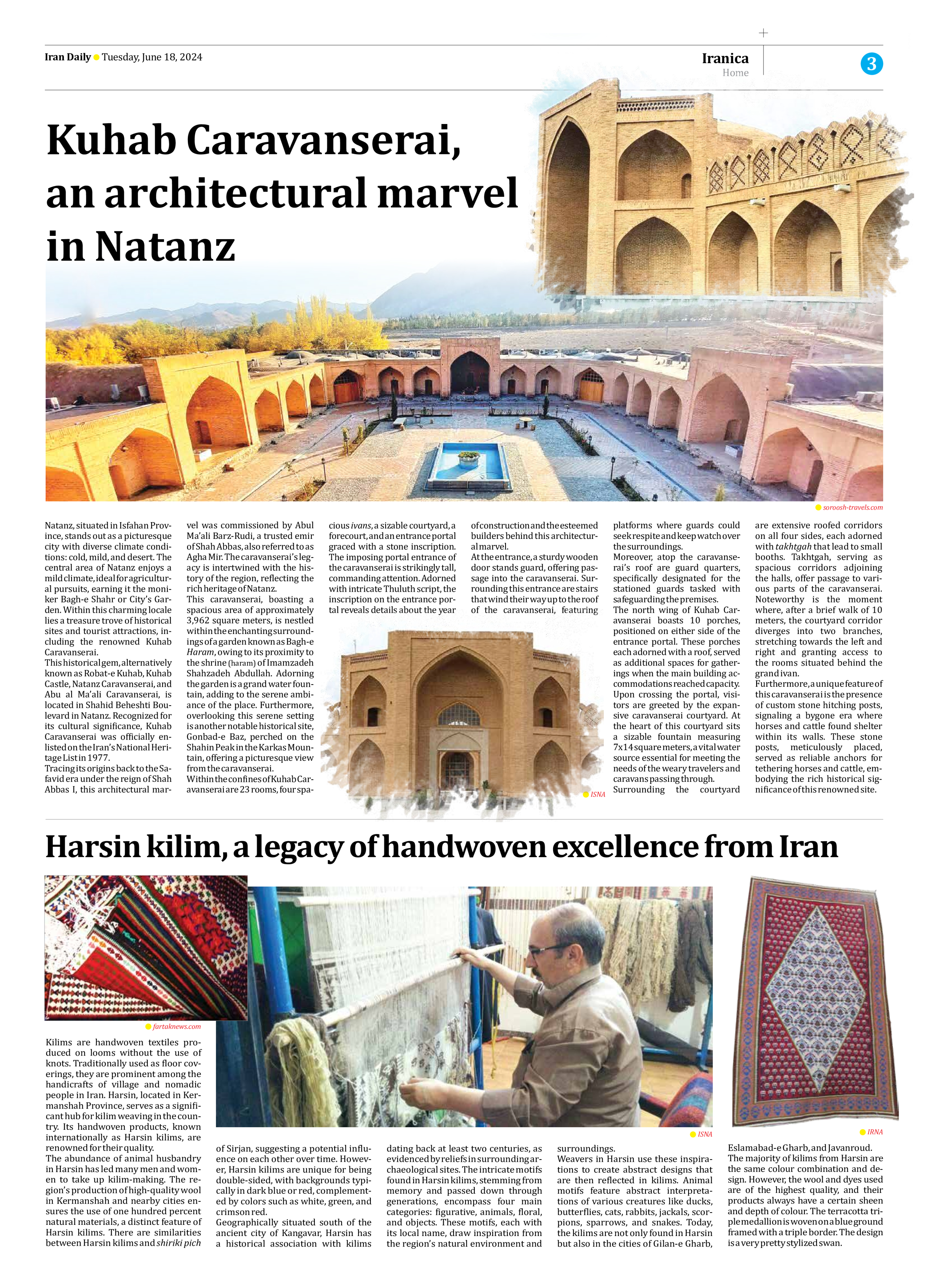
Kuhab Caravanserai, an architectural marvel in Natanz
Natanz, situated in Isfahan Province, stands out as a picturesque city with diverse climate conditions: cold, mild, and desert. The central area of Natanz enjoys a mild climate, ideal for agricultural pursuits, earning it the moniker Bagh-e Shahr or City’s Garden. Within this charming locale lies a treasure trove of historical sites and tourist attractions, including the renowned Kuhab Caravanserai.
This historical gem, alternatively known as Robat-e Kuhab, Kuhab Castle, Natanz Caravanserai, and Abu al Ma’ali Caravanserai, is located in Shahid Beheshti Boulevard in Natanz. Recognized for its cultural significance, Kuhab Caravanserai was officially enlisted on the Iran’s National Heritage List in 1977.
Tracing its origins back to the Safavid era under the reign of Shah Abbas I, this architectural marvel was commissioned by Abul Ma’ali Barz-Rudi, a trusted emir of Shah Abbas, also referred to as Agha Mir. The caravanserai’s legacy is intertwined with the history of the region, reflecting the rich heritage of Natanz.
This caravanserai, boasting a spacious area of approximately 3,962 square meters, is nestled within the enchanting surroundings of a garden known as Bagh-e Haram, owing to its proximity to the shrine (haram) of Imamzadeh Shahzadeh Abdullah. Adorning the garden is a grand water fountain, adding to the serene ambiance of the place. Furthermore, overlooking this serene setting is another notable historical site, Gonbad-e Baz, perched on the Shahin Peak in the Karkas Mountain, offering a picturesque view from the caravanserai.
Within the confines of Kuhab Caravanserai are 23 rooms, four spacious ivans, a sizable courtyard, a forecourt, and an entrance portal graced with a stone inscription. The imposing portal entrance of the caravanserai is strikingly tall, commanding attention. Adorned with intricate Thuluth script, the inscription on the entrance portal reveals details about the year of construction and the esteemed builders behind this architectural marvel.
At the entrance, a sturdy wooden door stands guard, offering passage into the caravanserai. Surrounding this entrance are stairs that wind their way up to the roof of the caravanserai, featuring platforms where guards could seek respite and keep watch over the surroundings.
Moreover, atop the caravanserai’s roof are guard quarters, specifically designated for the stationed guards tasked with safeguarding the premises.
The north wing of Kuhab Caravanserai boasts 10 porches, positioned on either side of the entrance portal. These porches each adorned with a roof, served as additional spaces for gatherings when the main building accommodations reached capacity.
Upon crossing the portal, visitors are greeted by the expansive caravanserai courtyard. At the heart of this courtyard sits a sizable fountain measuring 7x14 square meters, a vital water source essential for meeting the needs of the weary travelers and caravans passing through.
Surrounding the courtyard are extensive roofed corridors on all four sides, each adorned with takhtgah that lead to small booths. Takhtgah, serving as spacious corridors adjoining the halls, offer passage to various parts of the caravanserai. Noteworthy is the moment where, after a brief walk of 10 meters, the courtyard corridor diverges into two branches, stretching towards the left and right and granting access to the rooms situated behind the grand ivan.
Furthermore, a unique feature of this caravanserai is the presence of custom stone hitching posts, signaling a bygone era where horses and cattle found shelter within its walls. These stone posts, meticulously placed, served as reliable anchors for tethering horses and cattle, embodying the rich historical significance of this renowned site.







